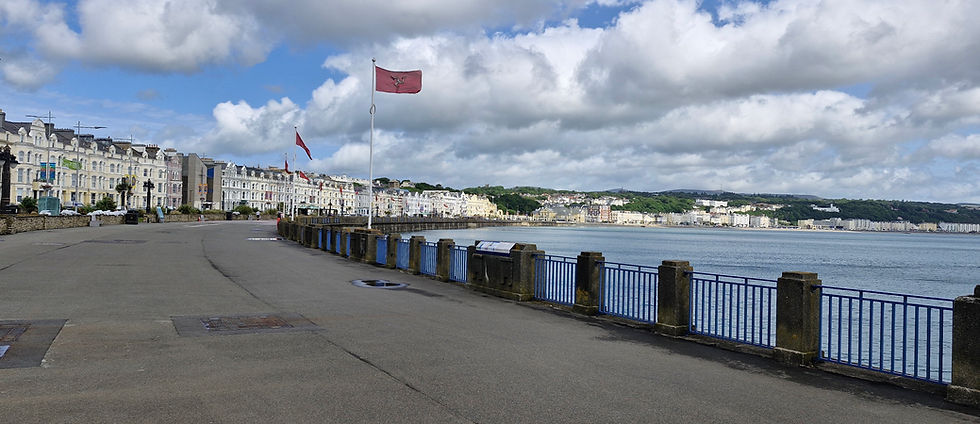Chambers at Large in Cambodia: Tuol Sleng museum, a Killing Field and the Royal Palace
- Amelia Chambers
- Sep 3, 2024
- 4 min read
Updated: Sep 17, 2024
The horrors of the Kampuchean Communist Party under Pol Pot in the 1970s was brought vividly to life by my guide and when visiting Tuol Sleng Prison (now a museum) where men who had been incarcerated within the red brick walls sold their books telling of their experience, and later when visiting one of the killing fields where thousands perished. I need to warn readers now that some of the descriptions and photographs below are upsetting, but historically accurate.

Tuol Sleng is a grim reminder of Pol Pot’s regime where thousands of people who did not show a loyalty to the party, or were considered “an enemy of the revolution”, were tortured and imprisoned prior to execution.

The red brick cells in which men and women were incarcerated are claustrophobic, unbearably hot in the summer, and excruciatingly cold during the winter. The barbed wire that is still in situ is almost symbolic of the suffering and in stark contrast to the central garden in which stands a memorial.

Large plaques etched with lists of names of those who died circumnavigate the central garden and they are a solemn reminder of the hundreds who suffered under this horrendous regime.

Another sign caught my eye asking visitors to show respect whilst visiting and I naively thought this was unnecessary, but it seems some people have no idea how to behave, let alone how to dress when it comes to honouring the dead.

From Tuol Sleng my fellow travellers and I went to what was called by a Cambodian reporter at the time: a “killing field”. The Choeung Genocide site is where 300 Cambodians per day were unmercifully executed by their own. It was plainly stated in our itinerary that shoulders and knees should be covered when entering temples and memorial sites. It seems some Westerners have no clue as to why, or believe themselves entitled to do as they wish. I may be old fashioned, but wearing a strapless dress or vestlike T-shirts suitable for the Costa del Sol is not appropriate when visiting a site where babies were killed by holding them by their feet and smashing their heads against a tree, or thrown in the air and bayonetted on their descent whilst their mothers were forced to watch.

The dead were thrown into mass graves and chemicals scattered over them to lessen the stench and to kill off any victims who may be still alive. One contained 166 headless bodies and a temple, higher than the size of an average house, is filled with skulls giving a clear indication of the extent of the massacre, deemed cleansing by Pol Pot.

Archaeologists are still working on sites where pieces of the bones of the victims have been disinterred and housed in shrines. Even their ragged clothes are stored in a glass shrine.

Today visitors walk on a boardwalk, above a sandy ground where trees grow throughout, and a river runs nearby. The tree where hundreds of babies were killed is covered with ribbons and a sign tells of another where a loudspeaker was placed to drown out the cries of the victims. Several chickens in an enclosure reminded visitors that next to the killing field were thousands of other fields in which people laboured for the benefit of the communist party.

I left the site in a very sombre and subdued mood which did not lighten when I arrived at the royal palace. Once again we had been told shoulders and knees should be covered when entering the royal residence. This time however, armed guards were there to enforce the dress code and people were told to cover up!

A traditional dress code exists in Cambodia and is observed by many government officials, newsreaders and others in the public eye. On Sunday red, representing bravery, is worn. Monday, orange or yellow dress is symbolic of equality. Purple is Tuesday’s colour expressing honesty or loyalty. On Wednesday wearing olive green signifies justice, whereas on Thursday a dark green embodies hope. Blue, meaning forgiveness, is worn on Friday and on Saturday a dark purple represents sadness. The seven colours are believed to bring happiness, prosperity, harmony and health if worn consecutively over seven days.

The palace is predominantly yellow, with reds and golds which shone in the afternoon sun. The intricate carving on the woodwork is extraordinary and I was told Cambodians love to carve, which was reinforced when I came across a beautifully carved, almost full-size elephant!

The taking of photographs is restricted in some areas, thus mine are limited to exteriors of buildings, where flags were flying in the gardens adorned with trees, shrubs and flowers.

I found it rather incongruous that a one party communist state like Cambodia has a royal family, but in the background of some photos you can see construction work as celebrations were underway to honour the queen mother’s eighty-eighth birthday. Photographs of her and her son, the present king could be seen in various locations, not only in the palace.

The opulence of the royal palace contrasted sharply with the prison and “the killing field”, but a peace now pervades Cambodia. Long may it reign.
***
Whilst in Southern Asia I explored Vietnam as well. To discover more please click on the links.





Comments